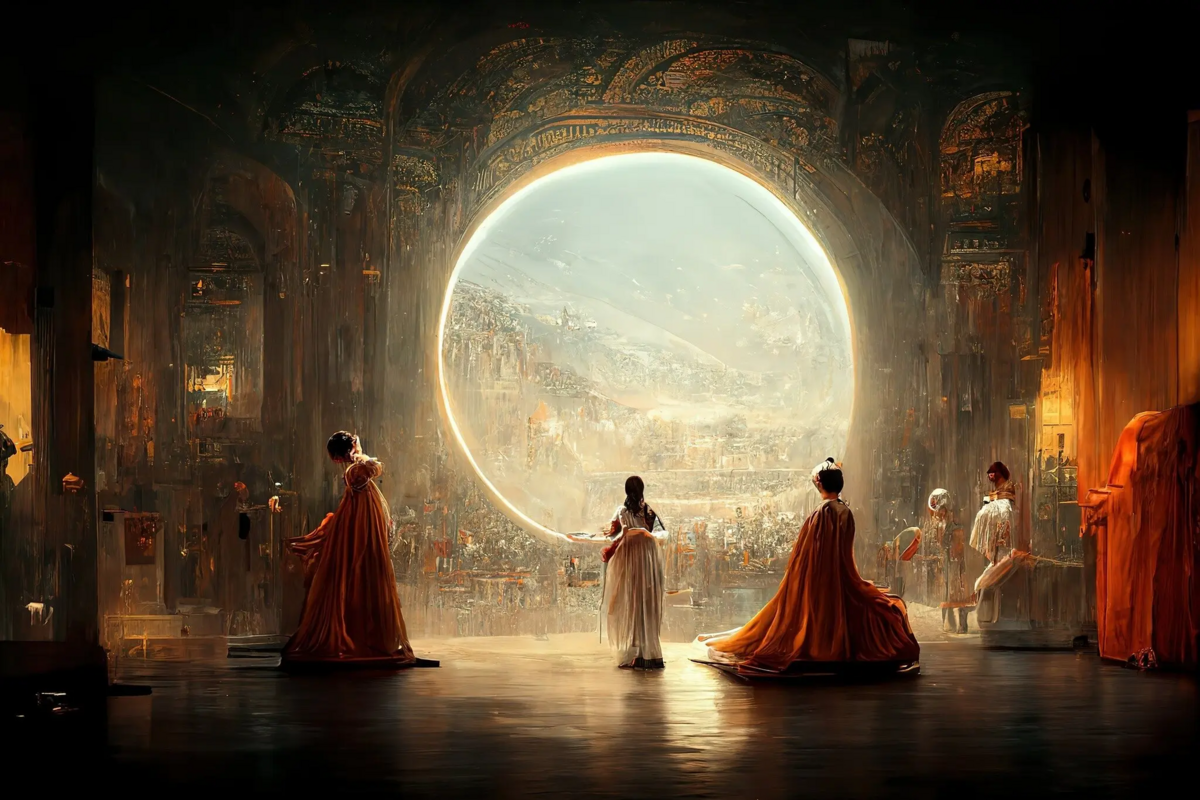Recently, the New York Times published an article featuring Jason M. Allen’s victory in the annual art competition at the Colorado State Fair. He crafted his winning image, named ‘Théâtre D’Opéra Spatial,’ using Midjourney (Roose, 2022). Midjourney is an artificial intelligence system that can produce unique images from short text descriptions (Midjourney documentation and user guide, z.d.).
Allen shared his winning image on Twitter, prompting emotive reactions from fellow artist. Some tweeted “we’re watching the death of artistry unfold right before our eyes” while others expressed, “this is so gross” (Roose, 2022). These responses initiate controversial discussions about the role of AI in the art world. Does integrating AI systems in the creation of artworks contribute to new masterpieces, or does it hinder human creativity?
After reading these responses, I found myself intrigued and eager to experiment with AI image creation. Over the past few years, I’ve used Canva for creating creative posters and flyers. Recently, I discovered the innovative ‘Magic Switch’ feature. Canva has seamlessly integrated AI technology to convert personal designs or texts into entirely new content (Tucker, 2023). Reflecting on my travels last summer to San Francisco, I decided to challenge Canva by requesting a sketch that combines the iconic Golden Gate bridge with the Erasmus Bridge. In just one second, the application generated a sketch featuring both bridges (figure 1). With a few other clicks, I could effortlessly modify the settings and styles, transitioning from dreamy images to realistic photos or sketches. While I acknowledge that I couldn’t have achieved such results manually in the same timeframe, I also empathize with the frustrated artists who argue that AI cannot replace human creativity.
While I acknowledge the potential for collaboration between artists and AI as a source of inspiration for new ideas and designs, my preference persists: I will always favor a painting crafted over a couple of months by the artist personally rather than one generated with just a few clicks.

(figure 1)
References:
Midjourney documentation and user guide. (z.d.). https://docs.midjourney.com/
Roose, K. (2022, 2 september). AI-Generated art won a prize. artists aren’t happy. The New York Times. https://www.nytimes.com/2022/09/02/technology/ai-artificial-intelligence-artists.html
Tucker, J. (2023, October 4). Canva Magic Switch – Canva Templates. Canva Templates. https://canvatemplates.com/canva-magic-switch/


